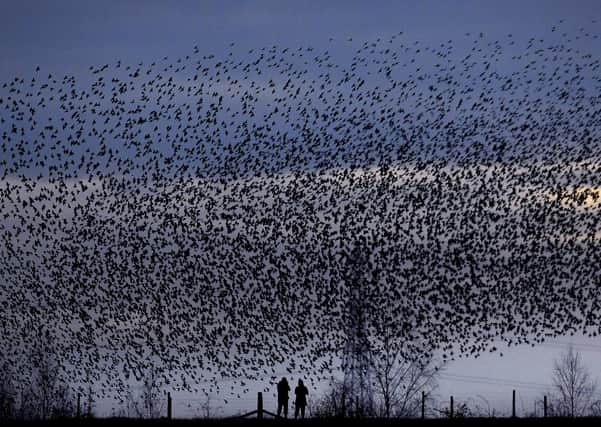Stunning starling murmuration at Fairburn Ings Nature Reserve caught on camera


This stunning picture was captured by Yorkshire Post photographer Simon Hulme at Fairburn Ings Nature Reserve near Castleford - a site which over the last 60 years has been transformed from coal face to a wildlife hotspot.
Starlings are known as ‘partial migrants’, with British starlings tending to stay put while those from colder parts of Europe head to the UK during autumn and winter.
Advertisement
Hide AdAdvertisement
Hide AdThe increase in numbers offers opportunities for these incredible aerial stunts which see thousands of birds swooping and diving in breathtaking unison.
According to the RSPB, starlings are believed to perform the manoeuvres for several reasons.
“Grouping together offers safety in numbers – predators such as peregrine falcons find it hard to target one bird in the middle of a hypnotising flock of thousands,” a spokesperson explains. “They also gather to keep warm at night and to exchange information, such as good feeding areas. They gather over their roosting site, and perform their wheeling stunts before they roost for the night.”
Fairburn Ings is a wonderful place for seeing other forms of wildlife too.
Advertisement
Hide AdAdvertisement
Hide AdThe site has wetland areas created by subsidence including open water, wet grassland, reedbed and wet woodland. Other habitats, including dry grassland, deciduous woodland and lagoons, have been restored on the former coal spoil tips.
An RSPB team carefully manages these habitats through measures such as cattle grazing on grassland and coppicing willows to enhance fen vegetation around open water areas.
A spokesperson explains: “In recent years this hard work has resulted in successful breeding by some of the UK’s rarest and most beautiful wildlife including; bittern, bearded tit, Cetti’s warbler, little egret and spoonbill.”
Technical information: Nikon D5 camera, 400mm lens, exposure 800th sec at f4, iso 1600.
Advertisement
Hide AdAdvertisement
Hide AdSupport The Yorkshire Post and become a subscriber today. Your subscription will help us to continue to bring quality news to the people of Yorkshire. In return, you’ll see fewer ads on site, get free access to our app and receive exclusive members-only offers. Click here to subscribe.
Comment Guidelines
National World encourages reader discussion on our stories. User feedback, insights and back-and-forth exchanges add a rich layer of context to reporting. Please review our Community Guidelines before commenting.